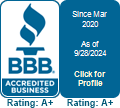
6 Financial Strategies for Busy Single Parents
Single parents face unique financial challenges, often juggling multiple roles while managing household expenses on a single income. According to the U.S. Census Bureau, about 11 million families in the United States are headed by single parents, with 80% being single mothers. The average cost of raising a child from birth to age 17 is $233,610, excluding college expenses (according to the U.S. Department of Agriculture). With these statistics in mind, it is clear that single parents must adopt financial strategies to ensure the stability and future security of their family.
Here are six financial strategies tailored for single parents.
I. Establish A Simple Budget.
Among single parents, 40% are concerned about unforeseen costs. Making a budget will help track your finances for both unexpected and ongoing expenses. You are not alone if you are unsure where to begin and find creating a budget stressful. Merely 30% of Americans make a comprehensive monthly home budget that balances income and expenses. Starting with a simple budget will help you tackle this crucial aspect of enhancing your financial well-being as a single parent:
- Determine your income after taxes.
- Make a plan for the necessities (bills, groceries, healthcare, etc.)
- Focus on wants (eating out, entertainment, travel).
- You should set aside a percentage of your income for savings.
Once you are comfortable with the fundamentals, you can introduce budgeting techniques like the 50, 30, 20 rule, zero-based budgeting, or the reverse budgeting approach.
II. Prioritize Emergency Savings
Life can be unpredictable. Expensive issues that you cannot budget for frequently arise, such as medical bills, automobile or home repairs, emergency care for a child, or unexpected unemployment. An emergency fund acts as a financial safety net that allows you to handle these expenses without turning to credit cards or loans.
Therefore, as a single parent, prioritizing emergency funds can make sense when you accumulate savings as part of your monthly budget. To avoid being tempted to spend money, experts usually advise keeping three to six months, worth of living expenses in a separate savings account. It will then be available for use as needed. However, even setting aside $100 every paycheck can significantly reduce financial stress in a crisis.
III. Invest in Life Insurance
Securing life insurance is essential for single parents. You will have the satisfaction that your children will be financially protected if something happens to you. According to a study by LIMRA, only 54% of Americans have life insurance, and many are underinsured. Term Life Insurance is typically the most affordable option, offering substantial coverage at a lower cost than whole life insurance.
However, ensure that your insurance plans are up to date. Letting an insurance lapse results in more than just loss of coverage. You can also face fines, legal repercussions, and increased insurance rates.
IV. Plan For The Future
While it is natural to focus on your kids needs, it is crucial not to neglect your long-term financial objectives. That is your retirement and the education of your children. What happens if you are unable to contribute to both? Thinking of your retirement will be a better idea. No loans are available for retirement, but your kids can probably apply for scholarships and take out education loans.
Contributions to any 401(k) plan started by your employer can be a good start. You are essentially turning away free money if your employer matches contributions. So, it can be advisable to contribute at least enough to receive the match. Alternatively, you might open an IRA with as little as $25 or $50 monthly. Even small, consistent contributions can grow significantly over time due to compound interest.
You can start an education savings account for your child once you have control over your retirement. Look at possibilities such as a 529 college Savings Fund or an Education Savings Account (ESA). Both, incidentally, offer tax benefits.
V. Make Use of the Resources Available
In the United States, parents face extreme financial strain, even in the case of strict budgeting and prudent money management. The GoFundMe Team states, “Raising children can quickly become a monetary hardship for a single parent without resources like paid maternity leave, preschool, and universal health care.” When one accounts for unanticipated crises and stagnant income, a single parent might occasionally require assistance.
Should such a circumstance arise, you can research and utilize the numerous government and community resources designed to support single parents and maximize your financial stability. For instance:
- National School Lunch Program
- Summer Food Service Program
- Supplemental Nutrition Assistance Program (SNAP)
- Women, Infants, and Children (WIC) Emergency Food Assistance
- Program for Child Care Assistance (CCAP)
- Temporary Assistance for Needy Families (TANF)
- The LIHEAP, or Low-Income Home Energy Assistance Program
- Medicare
- Medicaid
- Federal Government Pro Bono Program
- The Child Care Tax Credit
- Head Start
- Insure Kids Now
Additionally, there are grants and scholarships that you can qualify for, such as:
- The Huggies Mom
- Inspired Grant Program
- PeaChic Grants, Teach Grants, and Pell Grants
- Worldwide Fund for Women
- Women’s Independence Scholarship Program (WISC)
VI. Utilizing Tax-Saving Opportunities
Tax credits can differ between married and single individuals. As a single parent, it can be wise to budget by knowing all the tax breaks you might qualify for.
A few tax advantages that are worth looking into are as follows:
- If you file as Head of Household rather than Single, you may be able to claim a higher standard deduction.
- The Kid Tax Credit is available to qualified single parents, providing them approximately $2,000 per kid. Only one of you may make this claim. If you and the other parent have equal custody of your child, you might consider alternative years.
- Do you pay for daycare? The Child and Dependent Care Credit should be yours if that is the case. You may claim a credit for up to 35% of your daycare costs if your child is under 13.
- The Earned Income Tax Credit is available to single working parents with low to moderate incomes.
The Takeaway
As a single mom or dad, it can be easy to feel overwhelmed by financial responsibilities. However, by implementing these strategies, you can take control of your finances and create a secure future for yourself and your children. Remember that tiny changes over time can result in huge savings, as every little bit counts.


